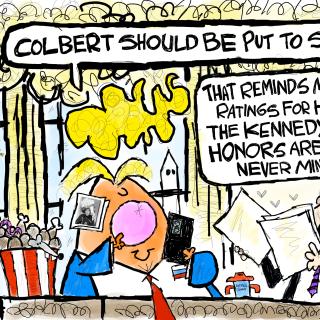It is fitting that I am writing this review of Serving Herself the day before the last leg of professional tennis’ Grand Slam, the United States Open, which is scheduled from August 28 through September 10 at Billie Jean King National Tennis Center in Flushing Meadows, New York. Gibson, one of the greatest women’s tennis players ever, won back-to-back titles there in 1957 and 1958, when it was known as the United States National Championship. Its prestige then and now is undeniable.
Gibson was a child of the Great Migration, that mass movement of 1.75 million blacks from the rural south to the urban north from 1910 to 1930 to escape the horrific conditions of Jim Crow. Her family finally settled in Harlem and life was hard. Gibson had four siblings and her father struggled to earn enough to take care of them. In her tough and teeming Harlem neighborhood, children had to prove they could defend themselves or be overrun by any number of bad forces. Her father, a hard disciplinarian, taught her how to box, and the inveterate tomboy held her own with her peers, older children and even adults. Gibson described herself as a “social misfit,” and “wild tomboy” who fought the stereotypes of the day: femininity, an interest in clothes and makeup, and ultimately, marriage and children. She also loved and excelled at sports, especially basketball and paddle tennis.
Her prowess at paddle ball led her to tennis, and in 1941 she was accepted into the interracial Cosmopolitan Tennis Club of the American Tennis Association. She won her first tennis tournament in 1942: the annual New York State Open held at the Cosmopolitan that year. In 1943 she joined the Mysterious Girls Athletic Club, a black women’s basketball team in Harlem. The women shared a passion for sports and were her respite from the stultifying conformity demanded by the ATA and society in general. They also offered her the camaraderie of a group of Black queer women not available to her elsewhere.
At 5' 10" inches tall, Gibson was lean, strong, athletic, and very competitive. Her tennis game was rarely seen in women players; she had a blistering serve, volleyed well, and excelled at hard smash shots. This brought her to the attention of the Dr. Hubert A. Eaton, Sr. and Dr. Robert Walter Johnson, two well-known players and coaches on the Black tennis circuit. (Dr. Johnson would later teach and coach Arthur Ashe.) They took her under their tutelage with two ideas in mind: finding a Black player who could compete in the elite white tennis world and smashing the deeply seated racism that kept black players out of that world. She split her living time between the men, working on her tennis game and personal deportment. They also saw to it that Gibson went back to school and completed her high school studies. Gibson found that she was attracted to and enjoyed the gracious living she experienced in the Eaton and Johnson families, becoming close to both of them.
Offered a full athletic scholarship, she enrolled at Florida A&M, now FAMU. She was surprised at the open, naked racism of the south, something she had not seen growing up in Harlem. Gibson also chafed at the way the college, its faculty, and administrators monitored the behavior of its students on and off campus, insisting that if they comported themselves in a respectable manner, it would be easier for them and those who followed to navigate into a white world that was ever so slowly beginning to think about integrating sports and other institutions. She played the clay and grass court circuits, and after an intense lobbying campaign and a sharply worded letter from the great women’s tennis champion Alice Marble, accusing the United States Lawn Tennis Association (USLTA) of discrimination, Gibson was finally admitted to Forest Hills. The press, both Black and White, were also beginning to cover her matches and her life, but always through the lenses of racism and sexism. Gibson recognized that while she had been given entree, she was not given belonging.
It may surprise readers to learn that Gibson had no interest in becoming the female Jackie Robinson of tennis. Though she clearly faced the barriers of gender, race, and class, she for the most part eschewed the role of a symbol for her race. She longed to be treated as an individual. Furthermore, she was hesitant to speak about the many indignities she faced as a Black person lest she be branded as difficult or unfriendly which would have negatively impacted her game and any opportunities it earned her. Gibson thought it best to let her racquet do the talking. Her importance to the Black press and her somewhat prickly nature collided on many occasions, and they sometimes publicly chastised her for being rude, ungrateful, and uncooperative. Because she put tennis first and romantic relationships last, her sexuality was often questioned although she seldom paid attention to the tongue wagging.
In 1951 Gibson won the Caribbean Championships in Jamaica, her first international title. That same year the State Department sent Gibson and three other players on the first of several goodwill tours in Asia during 1955; the tours were meant to tout democracy and to show that integration was not a problem in America. As a woman of color, she was well received by Asian spectators.
Gibson’s tennis game continued to blossom. She won her first singles Grand Slam event, the French Championship in 1956; she also won the doubles title there. In the same year she won the Wimbledon’s doubles championship, and the singles crowns in the Indian Championship in New Delhi, the Asian championship in Ceylon, and the Italian Championship in Rome.
Nineteen fifty seven was Gibson’s most stellar year. She reached the finals of eight events and won the singles titles at Wimbledon and the US National and the mixed doubles trophy in the US National; the Australian and Wimbledon doubles crowns; and was a runner up in the Australian singles and Wimbledon mixed doubles. That same year she became the first African American to join the United States Wightman Cup team, an annual tennis competition between the US and Great Britain. She was highly instrumental in helping the U.S. to defeat Great Britain 6-1. She won fifty-five matches in a row in 1957 and the first two matches she played in 1958. In that same year, Gibson defended her singles titles at Wimbledon and the US Nationals and won a third straight doubles championship at Wimbledon. Nineteen fifty-eight saw her debut as the first Black woman to grace the cover of Sports Illustrated and Time magazines. Phew!
While Gibson adored playing tennis and the trophies, ribbons, and plates were wonderful, players did not earn any money in amateur tennis–although it was not unknown for some players to be paid under the table or compensated for their expenses–nor could they endorse products or services. Moreover, the opportunities and invitations to play tennis that were so readily available to her white competitors were not offered to Gibson. She said, “When I looked around me, I saw that white tennis players, some of whom I had thrashed on the court, were picking up offers and invitations. Suddenly it dawned on me that my triumphs had not destroyed the racial barriers once and for all, as I had–perhaps naively–hoped.” This left her playing promotional events such as exhibition matches, so in 1958 she made the difficult and sad decision to retire from competitive tennis.
In Serving Herself, we learn some surprising things about Althea Gibson. For example, she had a side career in singing, but her first album, Althea Gibson Sings, netted disappointing sales. She was forced to sing while she had a bad cold, and the process of recording was rushed; something that normally took days or weeks was finished in twelve hours. Still, she appeared on the Ed Sullivan show, sang in clubs, and was often pressed into singing when she was at private parties. She wrote two autobiographies, I Always Wanted to be Somebody with Ed Fitzgerald, a sports writer, and So Much to Live For. She had a part in the movie The Horse Soldiers in which she played an enslaved woman. Gibson greatly disapproved of the stereotypical way her character was supposed to speak; she fought to and succeeded in having it changed. Gibson married and divorced twice, but never had children.
In 1964 Gibson decided to join the Ladies Professional Golf Association (LPGA) Tour at what in most sports was the advanced age of thirty seven; she was the first Black woman to do so. Gibson continued to encounter discrimination, even in the north. She often found it difficult to rent a room or be admitted to the locker rooms of the country clubs at which many golf tournaments were played and was often flat out refused the right to compete. Although she once finished tied for second place at the Len Immke Buick Open in 1970, her golfing career was disappointing; she never earned more than $25,000 after fourteen years on the tour.
In her second book, So Much to Live For, there is a current of bittersweet sadness regarding her life. Gibson acknowledges and discusses the dissatisfaction and pain at having been born too soon–too soon to make a good living playing tennis, to have her choice of well-paying product endorsements, to not be criticized for her lack of conformity to the stifling roles for women of her generation. She also laments the role that racism played in her career and was still annoyed at the fact that many people wanted her to be a crusader for integration and racial justice when all she wanted to do was play tennis.
By the 1980s, Gibson was battling poor health, forgotten and struggling to support herself. She contacted various tennis organizations but received no responses to her requests for help. Angela Buxton, her former doubles partner, learned about Gibson’s dire situation and helped raise one million dollars to assist her. Gibson had a heart attack in 2003 and suffered from bladder and respiratory conditions which brought on her death that same year.
Serving Herself is gracefully written. Ashley Brown, an Assistant Professor of History at the University of Wisconsin-Madison, and its Allan H. Selig Chair in the History of Sports and Society, does a brilliant job of placing Gibson’s life in the context of not only the Great Migration, but Jim Crow, the halting steps toward integrating American sports, the twentieth century Freedom Movement, and the third wave of feminism. Brown has done herculean work in mining the details of Gibson’s extraordinary life by consulting two dozen archives, articles from more than two hundred newspapers and magazines, personal interviews, and a huge number of theses, dissertations and books.
It gave Gibson tremendous joy to watch Arthur Ashe triumph at the US Open–formerly the US Nationals–in 1968 and Wimbledon in 1975, the first Black man to do so and to see Venus and Serena Williams and a number of other Black players join the professional tennis circuit and prosper. Gibson was especially proud of the Williams sisters; no doubt their athleticism, grit, and determination to succeed reminded her of her younger self, and she applauded their history-making careers. “I gladly pass the torch to you. . .” she wrote in a telegram to them.
The extraordinary Althea Gibson. Game, set, and match.



